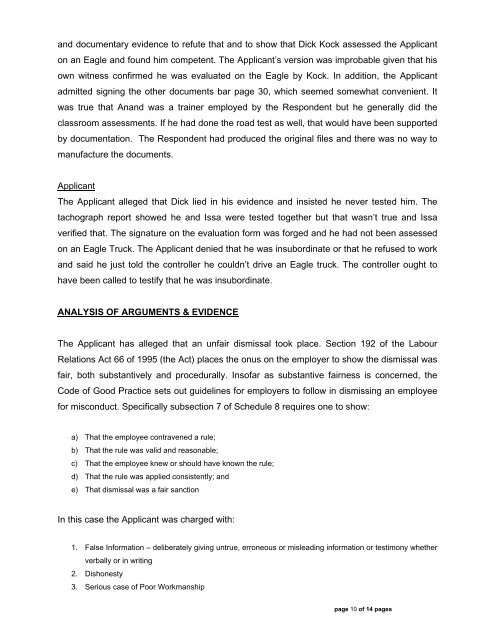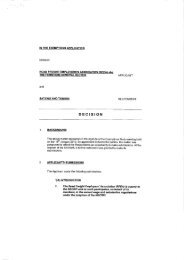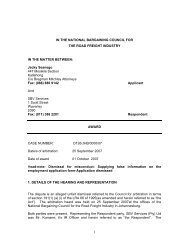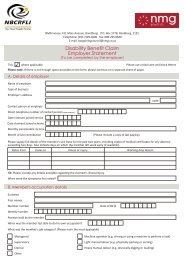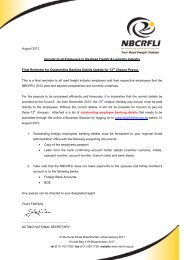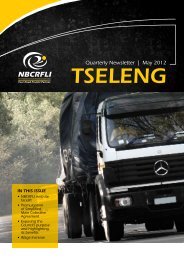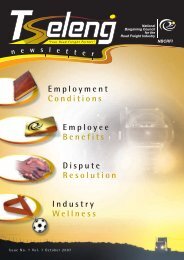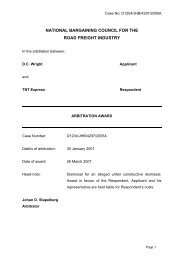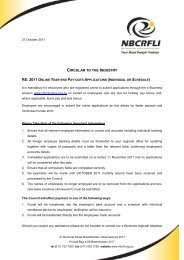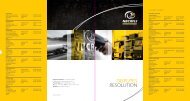Mdletshe vs Tanker 31 Aug 09 - nbcrfli.org.za
Mdletshe vs Tanker 31 Aug 09 - nbcrfli.org.za
Mdletshe vs Tanker 31 Aug 09 - nbcrfli.org.za
- No tags were found...
You also want an ePaper? Increase the reach of your titles
YUMPU automatically turns print PDFs into web optimized ePapers that Google loves.
and documentary evidence to refute that and to show that Dick Kock assessed the Applicanton an Eagle and found him competent. The Applicant’s version was improbable given that hisown witness confirmed he was evaluated on the Eagle by Kock. In addition, the Applicantadmitted signing the other documents bar page 30, which seemed somewhat convenient. Itwas true that Anand was a trainer employed by the Respondent but he generally did theclassroom assessments. If he had done the road test as well, that would have been supportedby documentation. The Respondent had produced the original files and there was no way tomanufacture the documents.ApplicantThe Applicant alleged that Dick lied in his evidence and insisted he never tested him. Thetachograph report showed he and Issa were tested together but that wasn’t true and Issaverified that. The signature on the evaluation form was f<strong>org</strong>ed and he had not been assessedon an Eagle Truck. The Applicant denied that he was insubordinate or that he refused to workand said he just told the controller he couldn’t drive an Eagle truck. The controller ought tohave been called to testify that he was insubordinate.ANALYSIS OF ARGUMENTS & EVIDENCEThe Applicant has alleged that an unfair dismissal took place. Section 192 of the LabourRelations Act 66 of 1995 (the Act) places the onus on the employer to show the dismissal wasfair, both substantively and procedurally. Insofar as substantive fairness is concerned, theCode of Good Practice sets out guidelines for employers to follow in dismissing an employeefor misconduct. Specifically subsection 7 of Schedule 8 requires one to show:a) That the employee contravened a rule;b) That the rule was valid and reasonable;c) That the employee knew or should have known the rule;d) That the rule was applied consistently; ande) That dismissal was a fair sanctionIn this case the Applicant was charged with:1. False Information – deliberately giving untrue, erroneous or misleading information or testimony whetherverbally or in writing2. Dishonesty3. Serious case of Poor Workmanshippage 10 of 14 pages


